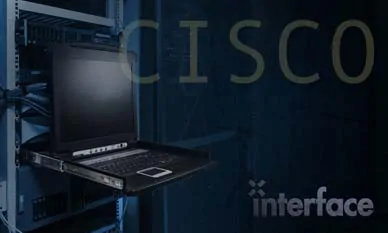
x
Course: Outline
Cisco SD-WAN Overlay Network
- Examining Cisco SD-WAN Architecture
Cisco SD-WAN Deployment
- Examining Cisco SD-WAN Deployment Options
- Deploying Edge Devices
- Deploying Edge Devices with Zero-Touch Provisioning
- Using Device Configuration Templates
- Redundancy, High Availability, and Scalability
Cisco SD-WAN Routing Options
- Using Dynamic Routing
- Providing Site Redundancy and High Availability
- Configuring Transport-Side Connectivity
Cisco SD-WAN Policy Configuration
- Reviewing Cisco SD-WAN Policy
- Defining Advanced Control Policies
- Defining Advanced Data Policies
- Implementing Application-Aware Routing
- Implementing Internet Breakouts and Network Address Translation (NAT)
Cisco SD-WAN Migration and Interoperability
- Examining Cisco SD-WAN Hybrid Scenarios
- Performing a Migration
Cisco SD-WAN Management and Operations
- Performing Day-2 Operations
- Performing Upgrades
Lab Outline
- Deploying Cisco SD-WAN Controllers
- Adding a Branch Using Zero Touch Provisioning (ZTP)
- Deploying Devices Using Configuration Templates
- Configuring Controller Affinity
- Implementing Dynamic Routing Protocols on Service Side
- Implementing Transport Location (TLOC) Extensions
- Implementing Control Policies
- Implementing Data Policies
- Implementing Application-Aware Routing
- Implementing Internet Breakouts
- Migrating Branch Sites
- Performing an Upgrade
Audience
- System installers
- System integrators
- System administrators
- Network administrators
- Solutions designers
Prerequisites
You should have the following knowledge and skills before attending this course:
- Completion of the Cisco SD-WAN Operation and Deployment (ENSDW) course or equivalent experience
- Knowledge of Software-Defined Networking (SDN) concepts as applied to large-scale live network deployments
- Strong understanding of enterprise wide area network design
- Strong understanding of routing protocol operation, including both interior and exterior routing protocol operation
- Familiarity with Transport Layer Security (TLS) and IP Security (IPSec)
What You Will Learn
After taking this course, you should be able to:
- Describe the Cisco SD-WAN overlay network and how modes of operation differ in legacy WAN versus SDWAN
- Describe options for SD-WAN cloud and on-premises deployments, as well as how to deploy virtual vEdge and physical cEdge devices with Zero Touch Provisioning (ZTP) and device templates
- Describe best practices in WAN routing protocols, as well as how to configure and implement transportside connectivity, service-side routing, interoperability, and redundancy and high availability
- Describe dynamic routing protocols and best practices in an SD-WAN environment, transport-side connectivity, service side connectivity, and how redundancy and high availability are achieved in SD-WAN environments
- Explain how to migrate from legacy WAN to Cisco SD-WAN, including typical scenarios for data center and branch
- Explain how to perform SD-WAN Day 2 operations, such as monitoring, reporting, logging, and upgrading
